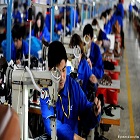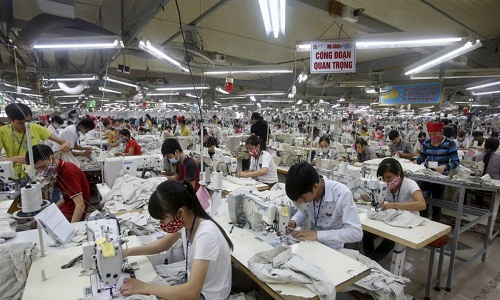"The strong performance of garment exports in Vietnam, Bangladesh and Cambodia has not been replicated across all of Asia's economies that rely heavily on apparel earnings. China, the continent's behemoth in apparel exports, finally seems to be feeling the impact of rising domestic costs. Myanmar, an important emerging player in the sector, also had a mixed year, with strong growth in apparel export volumes being offset by a steep depreciation of the local currency, the kyat, resulting in a drop in the US-dollar value of garment earnings."

Garment exporters in the Asian region by and large outperformed their rivals across the globe. Most of these countries occupy the lower end of the apparel value chain but the RMG sectors stable performance has highlighted its importance in the development of these emerging markets. According to estimates, last year was not too good for many Asian exporters. However, while commodities and electronics exporters suffered, apparel sector did remarkably well.
Apparel exports outperform

During last year, apparel exports remained a bright spot for many countries. In Bangladesh for example, exports rose by 6.5 per cent on average in 2015, and in Vietnam they were up by 8 per cent. A key growth driver in both instances was the strong expansion in exports of apparel. Readymade garments accounted for 69.6 per cent of Bangladesh's exports in the first 11 months of 2015, according to data from Bangladesh Bank, and increased by 6.1 per cent year on year over that period in local-currency terms. Vietnam government data show textiles and garments made up 14.1 per cent of total exports in 2015 but they increased strongly at 9.6 per cent in the year.
In Cambodia too, apparel sector dominates exports but has faced challenges over the past couple of years due to labour unrest and surging wages. However, here too, the garment sector played a role in supporting overall exports in 2015. According to National Bank of Cambodia data, total garment exports were up by 10.6 per cent year on year in US-dollar terms in the first three quarters of 2015, aided by more stable industrial relations.
The strong performance of garment exports in Vietnam, Bangladesh and Cambodia has not been replicated across all of Asia's economies that rely heavily on apparel earnings. China, the continent's behemoth in apparel exports, finally seems to be feeling the impact of rising domestic costs. Myanmar, an important emerging player in the sector, also had a mixed year, with strong growth in apparel export volumes being offset by a steep depreciation of the local currency, the kyat, resulting in a drop in the US-dollar value of garment earnings.
Asia leads global garment market
US government's Office of Textiles and Apparel (OTA) data show that US imports of apparel products amounted to $103.8 billion for the first 11 months of 2015, and Asian suppliers accounted for roughly three-quarters of this total. China's share of the US market remains highest, at 38.8 per cent but it was down from 39.1 per cent in the same period of 2014. The share of apparel and garment imports from members of the Association of South-East Asian Nations (ASEAN), by contrast, edged up to 19.7 per cent in January–November 2015, from 19.2 per cent in the year-earlier period. This was largely owing to higher imports from Vietnam: other ASEAN nations such as Indonesia, Thailand and the Philippines lost market share.
The share of South Asian economies in US garment and textile imports was close to that of ASEAN, at 15.4 per cent. India's garment and textile exports to the US rose by 8.8 per cent year on year in January–November 2015, while those from Sri Lanka were up by 16 per cent. (Bangladesh's exports to the US, up by 11.7 per cent, were more in line with the overall domestic apparel export performance.) The region's biggest disappointment was Pakistan, where exports of both apparel and textiles to the US fell as demand shifted more to synthetic fibers.
Exchange rates may shake up things
Within Asia and other emerging markets, the big shifts in currency exchange rates in recent months will probably have a significant impact on apparel trade in the next few years. Margins in the sector tend to be narrow, and currency movements can have a significant effect on national competitiveness.
However, many of the underlying trends evident in 2015 look set to continue. China's rising domestic costs are unlikely to be fully offset by the depreciation of the Yuan expected to in 2016. Garment sectors in India and Sri Lanka will continue to struggle with lackluster EU demand in the next few years but their rising sales in the US will provide some offsetting support. The rise of apparel producers in Bangladesh and Vietnam has been evident for several years, and there is no sign that their share of the global market will peak in the near future.
However, mid-tier producers in countries like Cambodia, Indonesia, the Philippines, Thailand and Pakistan will have to do more to match their rivals in this increasingly tough market. Prospects for the garment sector in all five countries look fragile, particularly as new and even cheaper countries like Myanmar emerge as potential sites for production. Apparel exports may be holding up better than those of commodities and electronics, but competition in the sector remains brutal.












